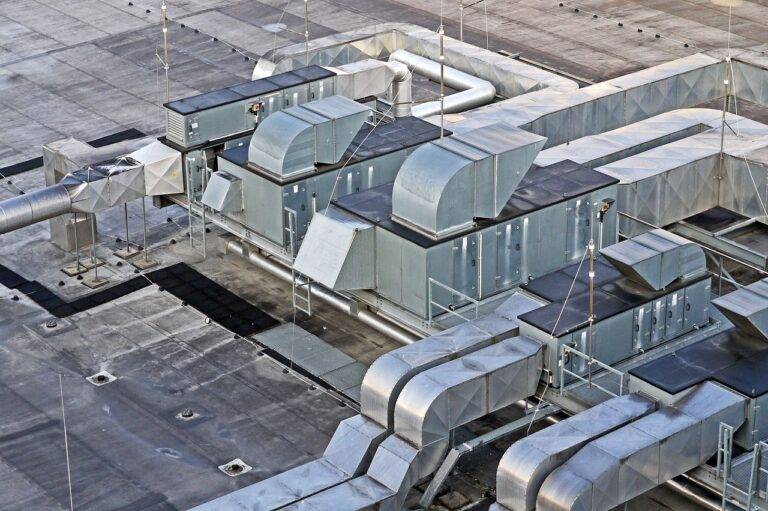The Role of Tech in Enhancing Public Transportation
Public transportation plays a vital role in modern society by providing millions of people with affordable and efficient transportation options. As our cities continue to grow and traffic congestion worsens, the need for effective and sustainable public transportation systems becomes even more critical. In recent years, technology has played an increasingly important role in enhancing public transportation, improving accessibility, efficiency, safety, and sustainability.
The Rise of Smart Technologies in Public Transportation
One of the most significant advancements in public transportation is the integration of smart technologies. These technologies leverage data, sensors, and connectivity to streamline operations, enhance passenger experiences, and optimize fleet management. Smart technologies are transforming public transportation in numerous ways, from real-time passenger information systems to predictive maintenance solutions.
Real-Time Passenger Information Systems
Real-time passenger information systems have revolutionized the way passengers interact with public transportation. These systems provide up-to-the-minute information on routes, schedules, delays, and service disruptions, empowering passengers to make informed decisions and plan their journey more effectively. Mobile apps, digital signage, and online platforms have become essential tools for accessing real-time information, improving the overall passenger experience.
Predictive Maintenance Solutions
Traditional maintenance practices in public transportation often rely on fixed schedules or reactive responses to breakdowns. However, predictive maintenance solutions are changing the game by leveraging data analytics and IoT to predict equipment failures before they occur. By monitoring the condition of vehicles and infrastructure in real-time, operators can proactively address maintenance needs, reduce downtime, and improve operational efficiency.
Enhanced Safety and Security Measures
Technology is also being used to enhance safety and security measures in public transportation. Surveillance cameras, emergency communication systems, and passenger counting sensors help operators monitor and respond to potential threats in real-time. Additionally, biometric authentication systems and contactless payment solutions are improving security and reducing fare evasion risks.
Integration of Mobility as a Service (MaaS)
Mobility as a Service (MaaS) is a revolutionary concept that aims to seamlessly integrate various transportation modes into a single platform, offering users a convenient and personalized travel experience. Through MaaS platforms, passengers can plan, book, and pay for their entire journey using a single app, combining public transportation, ride-sharing services, bike-sharing programs, and more. By leveraging technology and data integration, MaaS solutions optimize routes, reduce congestion, and enhance accessibility for all passengers.
Environmental Sustainability Initiatives
As concerns about climate change and air pollution continue to rise, public transportation operators are increasingly adopting sustainable practices to reduce their environmental footprint. Electric buses, hydrogen fuel cells, and biofuels are becoming more prevalent in transit fleets, offering cleaner and greener alternatives to traditional diesel vehicles. Additionally, technology is being used to optimize route planning, reduce emissions, and promote eco-friendly transportation choices.
Challenges and Opportunities Ahead
While technology has brought significant benefits to public transportation, challenges remain in achieving widespread adoption and integration across different systems. Standardization, interoperability, data privacy, and cybersecurity are key concerns that must be addressed to realize the full potential of tech-enhanced transit solutions. However, the opportunities for innovation and collaboration are abundant, as stakeholders work together to create smarter, more sustainable transportation networks for the future.
FAQs
1. How does real-time passenger information benefit public transportation users?
Real-time passenger information systems provide users with up-to-date information on routes, schedules, and service disruptions, helping them make informed decisions and plan their journeys efficiently.
2. What are the advantages of predictive maintenance solutions in public transportation?
Predictive maintenance solutions use data analytics to predict equipment failures before they occur, reducing downtime, optimizing maintenance schedules, and improving operational efficiency.
3. How can Mobility as a Service (MaaS) platforms improve accessibility for passengers?
MaaS platforms integrate various transportation modes into a single app, allowing passengers to plan, book, and pay for their entire journey seamlessly, enhancing accessibility and convenience.
Overall, technology is playing a transformative role in enhancing public transportation, improving safety, efficiency, sustainability, and accessibility for passengers. By embracing smart technologies and innovative solutions, the future of public transportation looks promising, with endless possibilities for growth and improvement.





